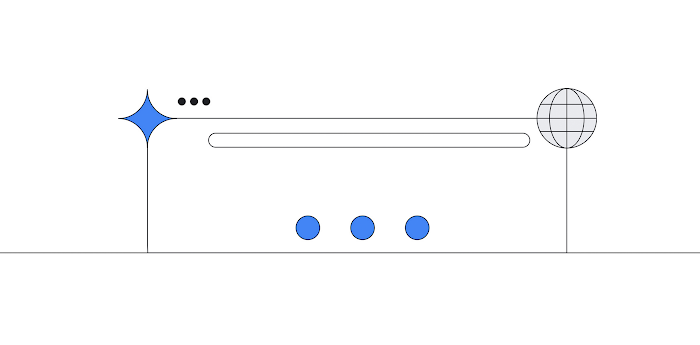Find and fix issues faster with our new Logs Viewer
Rami Shalom
Product Manager, Google Cloud
Mary Koes
Product Manager, Google Cloud
Monitoring your cloud infrastructure is an essential part of making sure your operations are running smoothly. Since announcing the new Cloud Logging interface in February, we’ve heard from users that the new interface is making it faster and easier to meet logging needs, including troubleshooting issues, verifying deployments, and ensuring compliance.
One of those users, Arne Claus, is a site reliability engineer at trivago, and has taken advantage of the new interface already. “We’re very happy with the new Cloud Logs Viewer,” he says. “The newer version is a lot faster and easier to use. The new histogram feature allows us to identify and drill down into issues quickly, so we can keep our systems healthy and performant.”
Cloud Logging was built from the ground up with a focus on speed. Some features were available in the classic UI, while others are totally new. Let’s take a closer look.
Improved performance and responsiveness
One of the main themes that we kept in mind as we rebuilt the Logs Viewer was performance and responsiveness. We created a new architecture to retrieve information from the back end, which has increased overall efficiency, performance, and responsiveness. You’ll likely notice these improvements when you start exploring the interface. By processing more on the server side, we can bring you new features and visualizations such as histograms.
Find spikes and anomalies more quickly with logs histograms
We’ve heard your feedback that you love logs-based metrics to explore the frequency of logs, but often don’t have a relevant metric when troubleshooting an incident that’s slowing down your troubleshooting flows. Based on your requests, we’ve added logs histograms to quickly show counts for matching log entries as you’re exploring your logs. You can turn histograms on and off via Page Layout in the Preview Logs Viewer, as shown here:
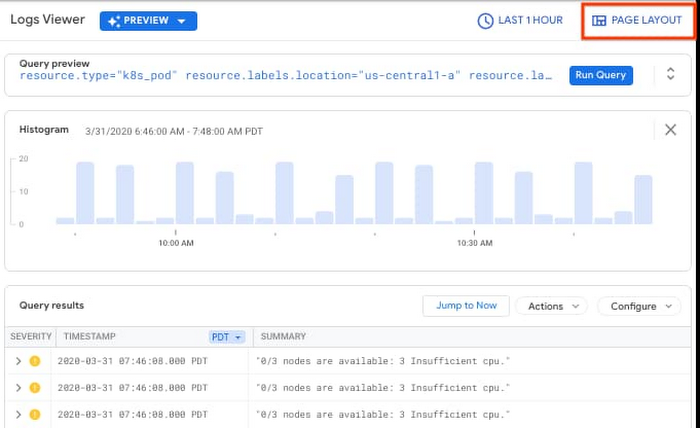

A more powerful way to build a query
One of the most common Cloud Logging tasks is building a query to retrieve the set of logs you’re interested in. The basic editor previously lacked the ability to use advanced features including operators, boolean expressions, or functions, like these:
jsonPayload.cat = ("longhair" OR "shorthair")
jsonPayload.animal : ("nice" AND "pet")
This Logs Viewer introduces a new experience to build these queries: You can use drop-down menus to add elements, see autocomplete options while editing the query, easily select a time range, and more, like this:


As in the classic UI, you can still modify your query directly from the log entries by clicking on the field and selecting “show” or “hide” matching entries, shown below. You can also change which fields are displayed in the summary line by selecting “Manage Summary Fields” from the Configure menu.
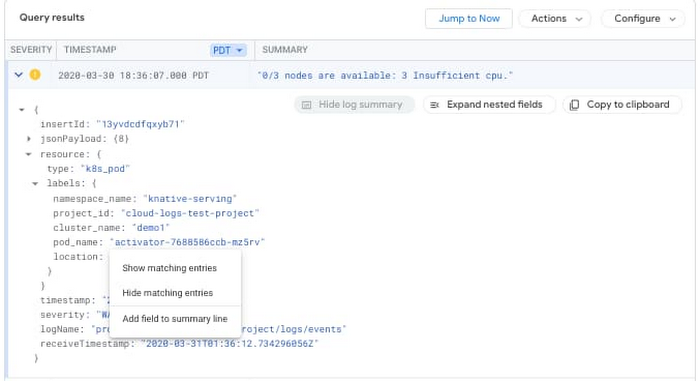

New experience to analyze your logs
Once you run a query, the typical next step in the process is to analyze the results. We know you spend most of your monitoring time analyzing those results, so offering a great experience performing this task was a top priority in the new Logs Viewer. The new look is designed to improve the process of browsing through the logs and make log data more readable and consumable, as shown here:
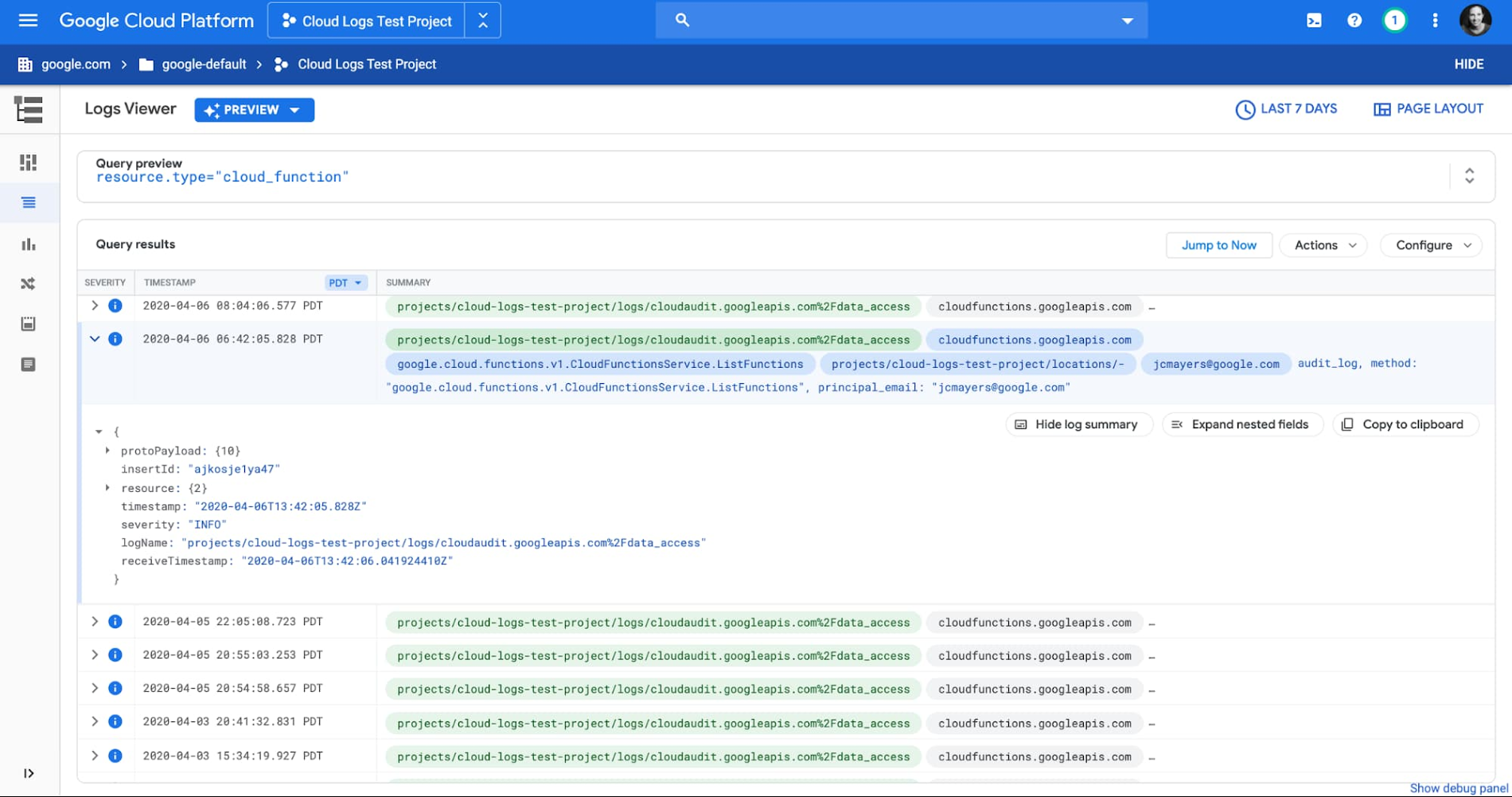

Get started with the new Logs Viewer
This is the first of several major improvements planned for the Logs Viewer experience. The new Logs Viewer is an evolving release, so it isn’t quite at full feature parity with the classic Logs Viewer. We’re adding new features and improving the user experience on a regular basis based on your feedback. We encourage you to try it out today and let us know what you think. Explore upcoming features and stay tuned for more as we continue to build and update the product.
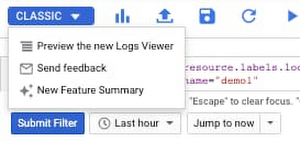

Enjoy the new experience, and send any questions through our discussion forum.
